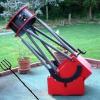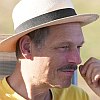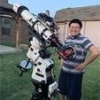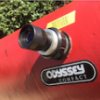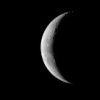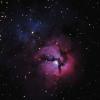Posted 05 October 2010 - 07:33 AM
That time at the eyepiece before you start a drawing also allows the primary to cool-down. (Lately I've been saving time by running the fan on my 10" for about a half-hour or so in the house while I'm preparing to take my gear out.)
Mars and Saturn do respond better to magnification than Jupiter does. Last opposition, I sometimes used 300x to 480x on Mars. I haven't tried a strip drawing for Jupiter yet. If I do, I might try 300x or so.
An apodizing mask works very well to bring out the contrast on Jupiter. I use one all the time for that planet. I did not notice any improvement on Mars, and I haven't tried it on Saturn. From what I've read by Suiter on the subject, he is still not sure if they really work or not, and if they do work, why they work. He acknowledges, though, that there is a lot of "anecdotal" evidence to support their use. But he claims that an apodizing mask is only useful for magnifications 200x-300x or higher. That contradicts my own personal experience. I find it improves the contrast on Jupiter at all magnifications. He also says it should only improve the image of objects that can fit within the inner, empty annulus, and that it should not help lunar observation, for instance. For me, the mask is better than any lunar filter for cutting down glare and increasing contrast away from the terminator, regardless of any theoretical assertions that it should not work on the Moon.
Mike










